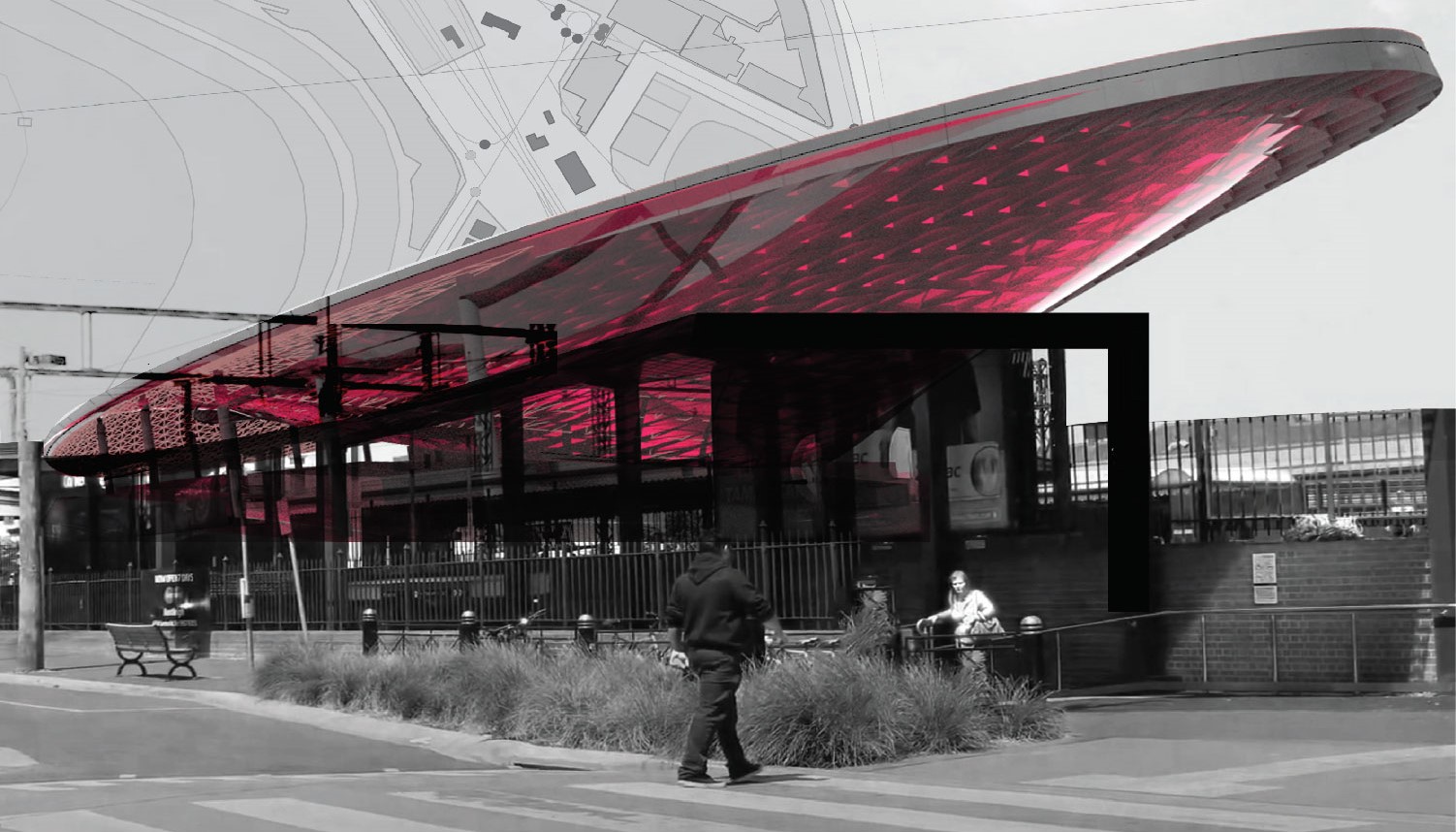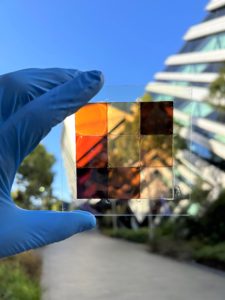The Role of Next Generation Solar Panels in Powering Up Our Cities
by Mr. Amit Kessel and Prof. Jacek Jasieniak, Exciton Science
This piece appears in the April 2023 edition of Science Victoria magazine. All issues can be read online for free at rsv.org.au/Science-Victoria.

In a rapidly changing world with growing energy demands, achieving a sustainable future requires scientific and technological innovations. Recent developments in novel solar cell materials will potentially allow us to use any surface that the sunlight touches to generate electricity, thus expanding our renewable energy capacity and overall energy resilience.
The sun is our most abundant renewable energy resource. With global efforts to transition away from fossil fuels, photovoltaic (PV) solar energy serves as a key technology for alternative, mobile power generation. PV deployment is growing, largely through residential rooftop installations and large-scale power plants. Over the past five years, the number of annual PV installations has tripled. Notably, Australia is the world leader in solar output per capita, having over 3.3 million total installations1.
As mass urbanisation unfolds, population densities are set to increase. In response, cities are evolving through the construction of taller buildings, which brings about a major growth in local energy demand, as taller buildings consume up to twice the energy per square metre compared to smaller buildings2.
Conventionally, urban PV deployments focus on rooftop installations, however, building facades also provide an opportunity for PV energy given that they also receive large amounts of sunlight. The vertical placement of PV (e.g. vertically up buildings) has been largely hampered by various challenges including higher installation costs, and incompatibility of standard commercial panels and with the architectural structure. This holds particularly true for modern buildings with highly glazed or curved facades.
Australia could still optimise its PV deployment. If the City of Melbourne, for example, generated 12% of electricity directly from the walls and windows of buildings, 76% of our city’s electricity demands could be met by PV technologies alone3. Fulfilling this solar energy generation potential requires the development of PV technologies that can be practically integrated both into and onto traditionally overlooked surfaces.
Photovoltaic (PV) Solar Cell Technologies
A solar cell is a device that uses the photovoltaic effect, a process in which the energy from photons in sunlight is transferred to electrons. The solar cell contains an absorber material, to absorb light and conduct electrons to an external circuit, resulting in build-up of voltage to generate an electrical current. The efficiency of a PV solar cell is the amount of electrical power coming out of the cell compared to the energy from the light shining on it, which indicates how effective it is at converting energy from one form to the other.
The first commercially viable PV panel made of silicon was introduced in 1954 by Bell Labs researchers. Since then, silicon solar cells remain the most dominant PV technology due to their low cost, long lifetime, and relatively high conversion efficiency. However, their rigid and opaque structure limits their use. Second generation thin-film solar cells were subsequently developed to reduce the amount of material needed. As their thickness is only about 1m, they are flexible and can be integrated in curved surfaces. Cells with alternative absorber materials have been developed, but their use has been limited due to their lower power conversion efficiency and/or high cost compared to silicon.
Emergence of Printable Solar Materials
There has been a surge in the research and development of novel, low-cost printable solar materials. These materials are compatible with existing industrial processes, such as roll-to-roll printing, which can be used to fabricate flexible solar panels, and control solar cell colour and transparency. This makes them suitable for various building-integrated photovoltaics applications.
Perovskite solar cells (PSC), specifically, show great promise as they have power conversion efficiencies as high as the best silicon-based lab-scale devices4. Moreover, their superior performance in low light is especially useful for vertical placement (given that walls typically receive less sunlight than roofs) and they can even be used as a two-way solar panel that harvests both indoor light and outdoor sunlight.
In our group at Monash University and as part of the ARC Centre of Excellence in Exciton Science, we study and develop PSC. Our research is focused on developing transparent solar cells that could be integrated in windows and other surfaces that require some degree of transparency.

Perovskite Solar Cells
Perovskites are a class of materials comprised of organic, metallic and halide ions. They share a common crystalline structure that equips them with strong absorption of ultraviolet and visible light, where most of the available energy from sunlight lies. Modifying the molecular structure changes the wavelengths of light absorbed and in turn, the perceived colour of the material. For solar window applications, often a colour-neutral appearance is preferable, similar to a tinted glass window, while the solar cells can be coloured if inside the walls. Typically, a perovskite film with a thickness of no more than 600 nm is sufficient to achieve maximal light absorption. Reducing thickness is a simple way to ensure transparency, however, reducing thickness also reduces the potential power conversion efficiency. Therefore, it is crucial to obtain as much energy as possible from the limited amount of photons absorbed in order to make a meaningful contribution to electricity consumption. One of our research goals is to create transparent solar cells with a natural appearance so that they can be used as windows that generate solar power.

Potential and Outlook
The modern urban area has many sunlit surfaces that could be exploited for solar energy harvesting. Recent advancements in printable solar materials pave the way to support our ever-growing power demand. By integrating PV in the architecture and design of buildings, we can optimise the way we generate solar power. The outside of a building could one day be fully covered in solar panels, with completely opaque and semi-transparent cells integrated into the walls and windows respectively. These panels could also improve thermal insulation of buildings by preventing heat from entering on a hot day or leaving the building on a cool one. It is estimated that for glazed buildings, a 40% reduction of the yearly energy consumption can be reached with the use of PV windows5.
The use of flexible solar panels could also turn bridges, bus stops or any other shelter structure into power generators with an aesthetically appealing design. Importantly, the need for next generation PV goes beyond urban construction, with promising applications in areas such as agriculture and self-powered vehicles. While some companies are beginning to introduce PV into the market, improved scalability and stability, and cost reductions are necessary to realise their commercial success6. With all the opportunities at hand, this is an area that is expected to demonstrate significant growth.
—
Mr. Amit Kessel and Professor Jacek Jasieniak are researchers in the Department of Materials Science and Engineering at Monash University and the ARC Centre of Excellence in Exciton Science.
References:
- APVI. (2022). Australian PV market since April 2001.
- Godoy-Shimizu, D., et al. (2018). Energy use and height in office buildings. Building Research & Information, 46(8), 845–863. doi.org/10.1080/09613218.2018.1479927
- Panagiotidou, M., et al. (2021). Prospects of photovoltaic rooftops, walls and windows at a city to building scale. Solar Energy, 230, 675–687. doi.org/10.1016/j.solener.2021.10.060
- NREL. (2022). Best Research-Cell Efficiencies Chart.
- Wheeler, V. M., et al. (2022). Photovoltaic windows cut energy use and CO2 emissions by 40% in highly glazed buildings. One Earth, 5(11), 1271–1285. doi.org/10.1016/j.oneear.2022.10.014
- Burgués-Ceballos, I., et al. (2021). Transparent organic photovoltaics: A strategic niche to advance commercialization. In Joule (Vol. 5, Issue 9, pp. 2261–2272). Cell Press. doi.org/10.1016/j.joule.2021.07.004






